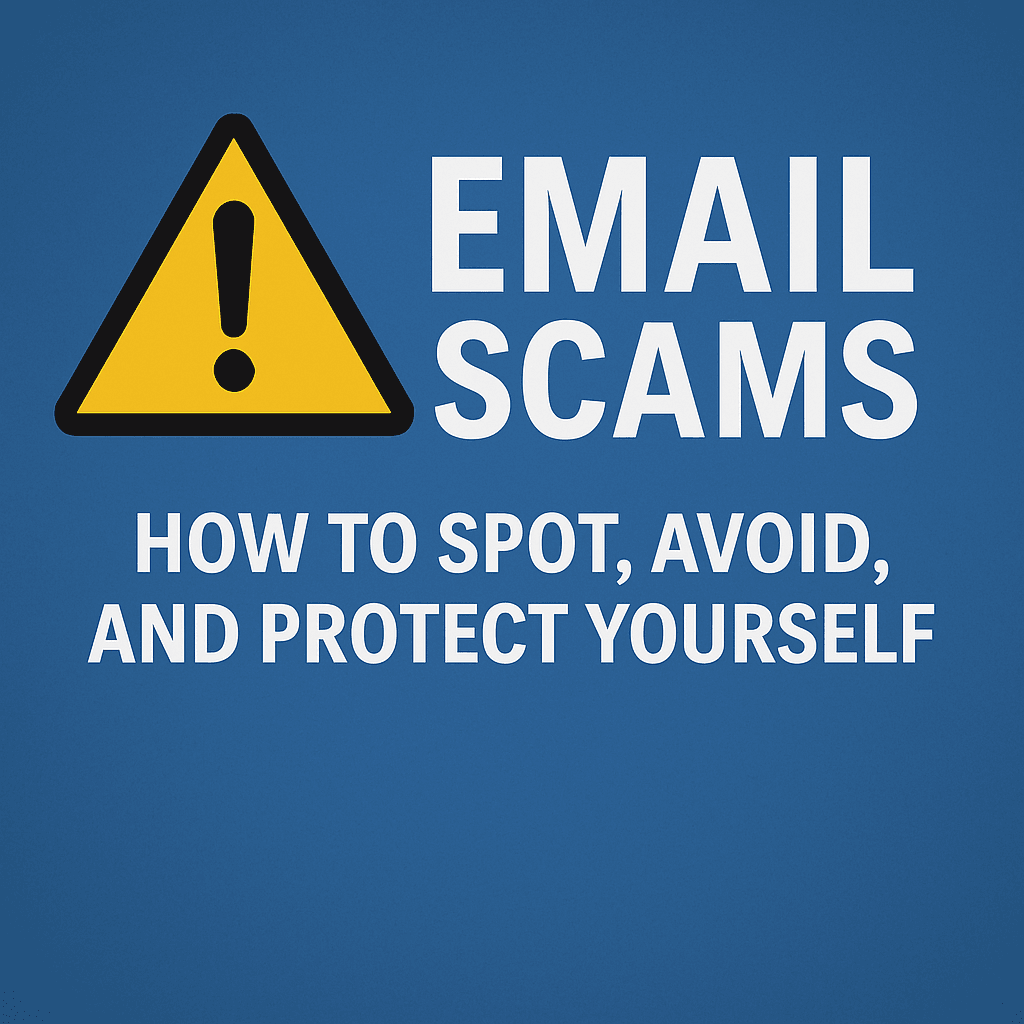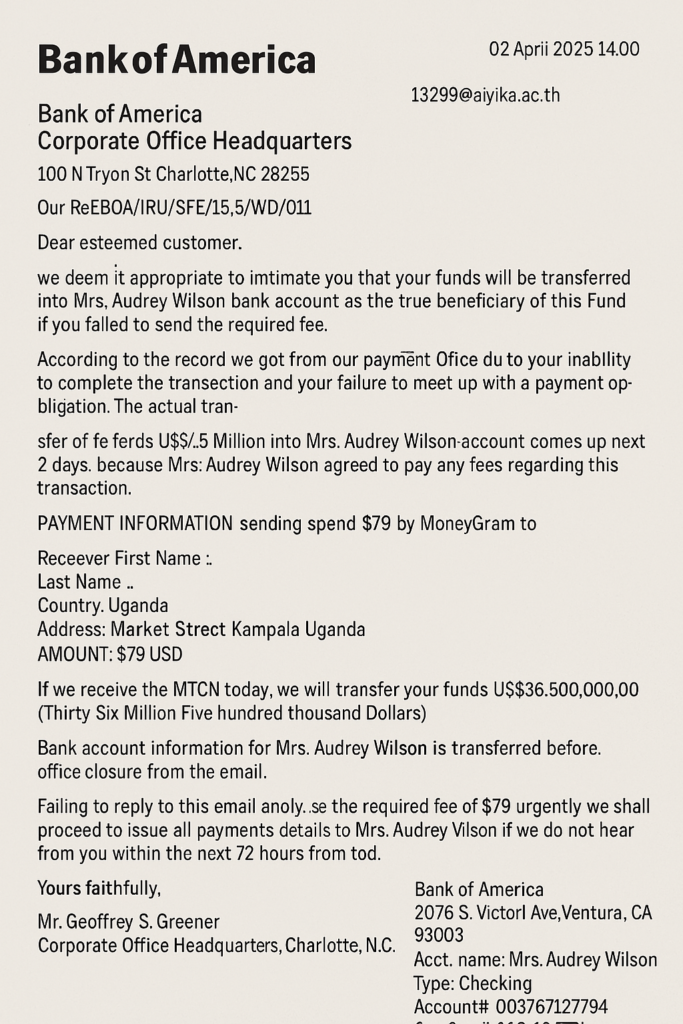
Email is a powerful communication tool—but it’s also one of the most common ways scammers try to steal personal and financial information. In this guide, we’ll explore how email scams work, how to spot them, and what to do if you fall for one.
What Is an Email Scam?
An email scam is a deceptive message sent via email with the goal of tricking the recipient into providing sensitive information, clicking harmful links, or sending money. These scams rely on tactics like impersonation, fear, urgency, or greed to manipulate victims.
Why Are Email Scams So Dangerous?
- Low cost and wide reach: Scammers can target thousands of people with one click.
- Realistic impersonation: They often mimic trusted organizations.
- Emotionally manipulative: They create panic, excitement, or false hope.
Common Types of Email Scams
1. Phishing
Impersonates companies like PayPal or Netflix to steal login details.
2. Spear Phishing
Targets specific individuals using tailored information.
3. Business Email Compromise (BEC)
Fakes executive or vendor accounts to request money transfers.
4. Lottery or Inheritance Scams
Promises a fortune in exchange for a small “processing fee.”
5. Advance Fee Scams
E.g., Nigerian Prince scams. You’re promised millions—but must first pay a small fee.
6. Tech Support Scams
Pretends to be from Microsoft or Apple. Claims you need to fix a computer issue urgently.
How Scammers Operate
- Hook with a scary or exciting message.
- Create urgency or fear.
- Ask for personal details or money.
- Disappear after stealing your data or funds.
Real Scam Example: Bank of America Advance Fee Scam

A fake email claims you’re owed $36.5 million, but must send $79 for a “Fund Legality Certificate.” This is a textbook advance-fee fraud. The scam includes real-sounding names, banking language, and threats of forfeiture if you delay.
Spotting a Scam Email
- Check the sender’s email address carefully.
- Look for grammar and spelling errors.
- Be wary of urgent or threatening messages.
- Hover over links (don’t click) to see where they lead.
- Never open attachments unless you’re expecting them.
- Don’t believe things that sound too good to be true.
How to Protect Yourself
- Use spam filters.
- Enable two-factor authentication.
- Use unique, strong passwords for all accounts.
- Keep antivirus software updated.
- Educate yourself and others.
If You’ve Been Scammed
- Change passwords immediately.
- Scan your computer for malware.
- Contact your bank if money was involved.
- Report the scam (e.g., Action Fraud UK or FTC in the US).
Final Thoughts
Email scams are evolving every day. Staying informed, sceptical, and cautious is your best defence. Remember, no real company will ask for your password or money via email. Always verify before you click.
Want more scam awareness tips? Follow our blog and stay safe out there!
